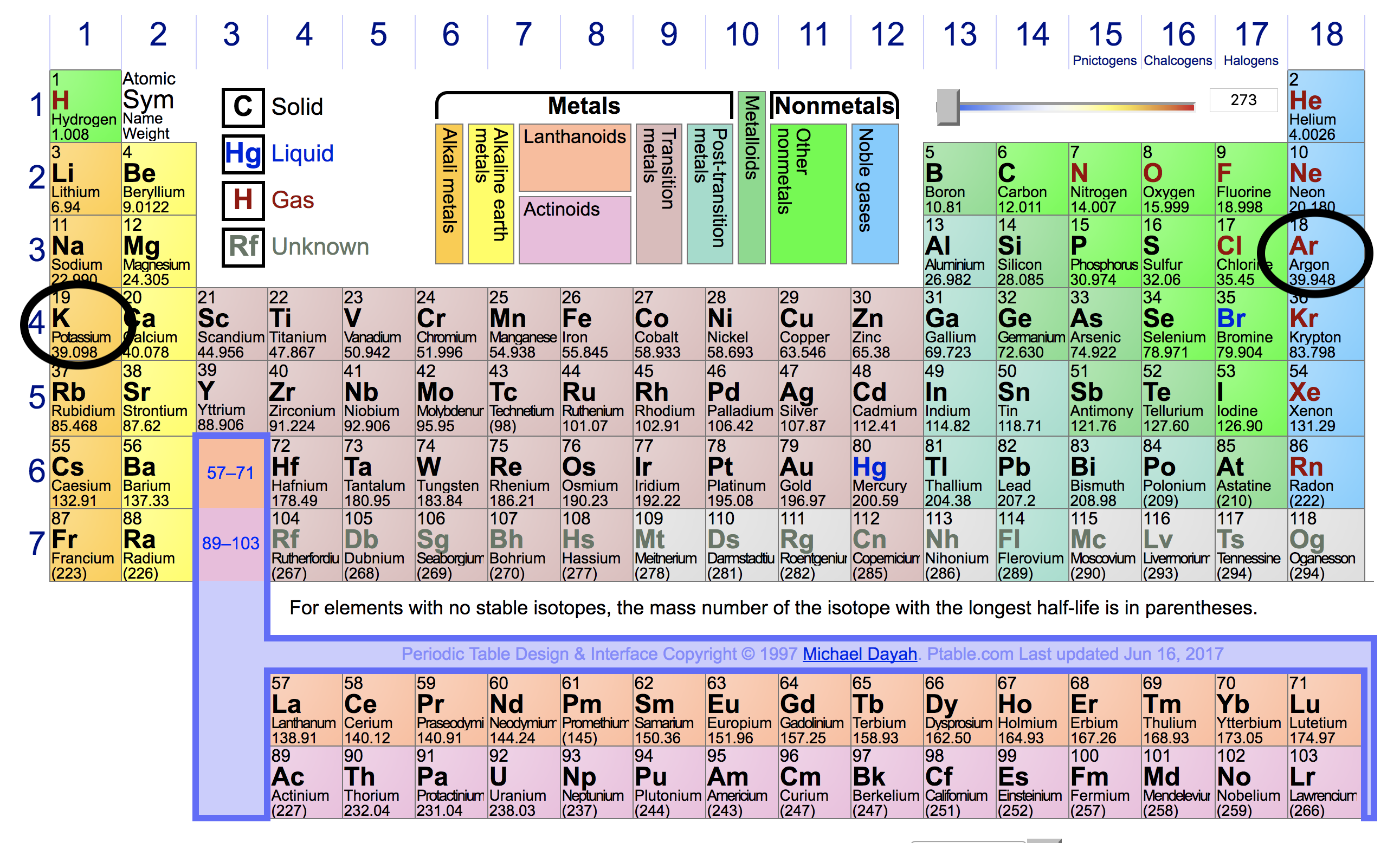Potassium is highly reactive metal, while argon is an inert gas. How can you explain this difference based on their electron configurations?
1 Answer
Potassium needs to lose an electron to achieve noble gas configuration, while argon already has noble gas configuration.
Explanation:
Here are the positions of potassium and argon on the periodic table:

From this, we can see that:
- Potassium's full electronic configuration is
#1s^(2)2s^(2)2p^(6)3s^(2)3p^(6)4s^1# . - Argon's full electronic configuration is
#1s^(2)2s^(2)2p^(6)3s^(2)3p^(6)# .
Most elements tend to want to either gain or lose electrons to become isoelectronic to—or have the same electron configuration as—noble gases.
For most elements, this configuration is
As such, potassium would like to lose its
As for argon, it already has a
It's a noble gas, so it doesn't want to gain or lose more electrons.

